Perisperm and Pericarp difference, definition & function, hi guys in this article we know about perisperm meaning, definition, function & example of perispermic seed and also know about pericarp meaning & definition. Perisperm is the layer of nutritive tissue, derived from the nucellus, that surrounds the embryo of a seed in some angiosperms.
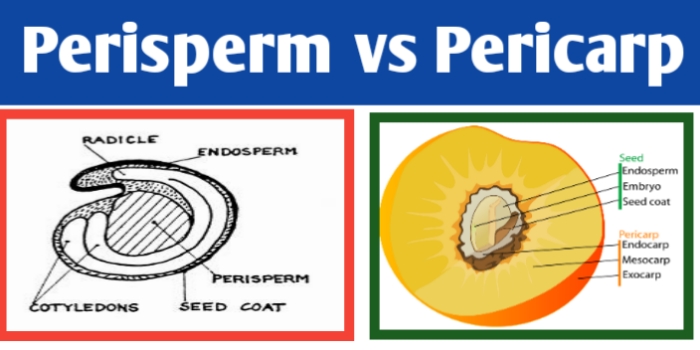
Perisperm and Pericarp difference, definition & function
Perisperm differ from pericarp in,perisperm is the layer of nutritive tissue, derived from the nucellus, that surrounds the embryo of a seed in some angiosperms whereas the pericarp is the part of a fruit formed from the wall of the ripened ovary. It surrounds the seeds. It is tough in nature because the parent plant needs to protect the plant growing.
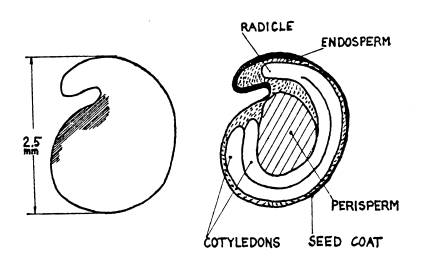
Perispermic seed examples, image source: google
Perisperm meaning is peri + sperm, unused nucellus present in some seed and surrounds embryo sac,remnants of a nucellus is persistent,this residual, persistent nucellus is called perisperm.
The Seed, the characteristic reproductive body of both angiosperms (flowering plants) and gymnosperms (e.g., conifers, cycads, and ginkgos). Essentially, a seed consists of a miniature undeveloped plant (the embryo), which, alone or in the company of stored food for its early development after germination, is surrounded by a protective coat (the testa).
◆ Follow me on YouTube
◆ VISIT ON OUR YOUTUBE CHANNEL BIOLOGY SIR FOR MORE VIDEO
A layer of nutritive tissue in the seed of certain flowering plants that are derived from the nucellus and surrounds the embryo. In seeds of some plants remnants of a nucellus is persistent. This residual, persistent nucellus is called perisperm.
Pericarp definition & meaning:– The pericarp is the part of a fruit formed from the wall of the ripened ovary. It surrounds the seeds. It is tough in nature because the parent plant needs to protect the plant growing. It is divided into three layers: 1) Epicarp, 2)Mesocarp, and 3)Endocarp. 1) Epicarp is the outermost layer which forms the tougher skin of the fruit. 2)Mesocarp is the fleshy middle layer of pericarp i.e, found between the epicarp and endocarp. 3)Endocarp is the innermost layer of the pericarp, which directly surrounds the seed. It may be membranous or hard and thick or maybe stony sometimes.
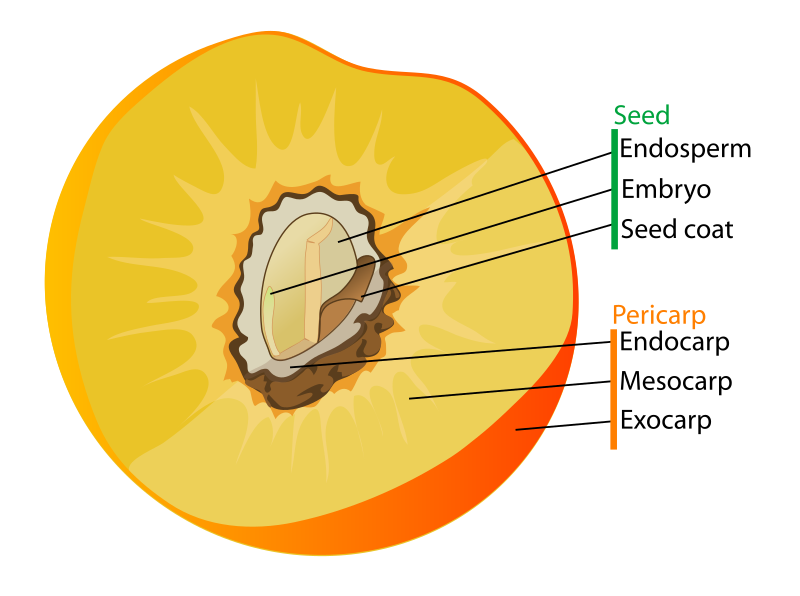
Pericarp of fruit, image source: google
Perisperm differs from endosperm in being a diploid tissue. Endosperm is a triploid tissue produced inside the seeds of most flowering plants around the time of fertilization. It surrounds the embryo and provides nutrition in the form of starch, though it can also contain oils and protein.
Endosperm that is triploid, resulting from the fusion of a pollen nucleus with two maternal nuclei. They are both nutritive layers in a seed. Perisperm develops from the nucellus of the seed and the endosperm develops when the sperm cell fuses with two haploid polar nuclei (contained in the central cell) in the centre of the embryo sac (or ovule). The resulting cell is triploid (3n). This triploid cell divides through mitosis and forms the endosperm, a nutrient-rich tissue, inside the seed.
The perisperm is the nutritive tissue of a seed derived from the nucellus and deposited external to the embryo sac —distinguished from endosperm. Some examples of perispermic seeds are Sugar beet, coffee, and black pepper.
Perisperm and Pericarp difference, definition & function
Perisperm and pericarp difference is, perisperm is the layer of nutritive tissue, derived from the nucellus, that surrounds the embryo of a seed in some angiosperms whereas the pericarp is the part of a fruit formed from the wall of the ripened ovary. It surrounds the seeds. It is tough in nature because the parent plant needs to protect the plant growing.
Now understanding the major difference between perisperm and pericarp in various points:-
Perisperm:-
1) it is unused nucellus in the seed
2) It is part of seed
3) It is usually dry in nature
4) It is otter nonfunctional for seed
5) perisperm is present in only a few seeds.
Pericarp:-
1) it is the covering of fruit that develop from ripened ovary wall
2) it is part of fruit
3) it is dry or fleshy
4) it is protective covering and help in dispersal and nutrition
5) it is found in all fruits.

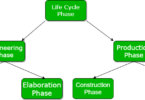

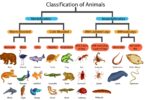
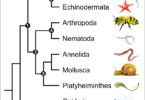
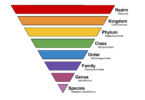
Leave a Comment